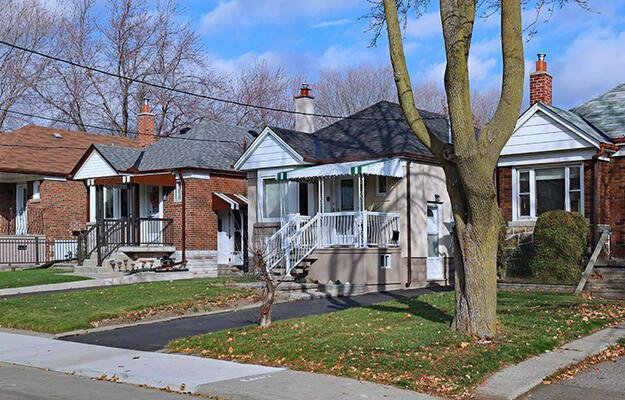
Does the Family Self-Sufficiency Program Work? National Evidence May Not Tell the Whole Story
by Steven Brown
Although many have expressed legitimate concerns about Secretary Carson’s goal of moving people out of US Department of Housing and Urban Development (HUD) assistance, the reality is that, for a subset of HUD-assisted renters, that should be our common goal. Nearly 2 million households with HUD assistance have a head of household who is of working age and has no work-limiting disabilities. With sufficient labor market conditions and marketable skills, this sizeable minority of rental assistance recipients could earn their way out of needing a housing subsidy (or, in the short term, needing as much of one). Given that, federal housing assistance programs provide space to help families become upwardly mobile. A key HUD program that seeks to help families bring home more money is the Family Self-Sufficiency Program (FSS). Although the evidence from national FSS studies has been mixed, a new study suggests that guidance from high-performing programs could hold the key to impactful results.
What is FSS?
The Family Self-Sufficiency Program, now in its 25th year, provides residents of public housing, voucher assistance, and project-based Section 8 with two supports for upward economic mobility: (1) a case manager or coach to facilitate access to services and (2) the financial incentive of an escrow account that automatically grows with their income. Families that participate in FSS enter into a contract with a public housing authority (PHA) or private housing provider. The case manager or coach supports residents in working toward agreed-upon goals by connecting them with services from third-party programs.
As part of the FSS contract, when families’ incomes increase, the portion of that extra income that would have otherwise gone to rent instead goes into an interest-bearing escrow account, managed by the PHA or private housing provider. Meanwhile, HUD continues to pay the PHA or owner the full housing assistance payment. If families meet their contract goals within five years (or seven if the household received an extension), the family is granted access to all the funds in the escrow account to be used however they see fit. With FSS, a participating tenant gradually becomes accustomed to budgeting for higher rent payments but receives this additional rent back (plus interest) after program completion. Studies have found that the final balances on these escrow accounts often exceed $5,000.
What Is the State of the Research on FSS?
Though the program is promising in its conception, much of the research has not clearly and consistently affirmed that promise. But a recently published evaluation of an FSS program run by Compass Working Capital in Lynn and Cambridge, Massachusetts, shows FSS can have a positive impact on employment, earnings, and savings. The study finds that Compass FSS participants’ incomes increased by just over $6,300 more than similar local PHA residents who were not in FSS. This study also shows that Compass FSS participants paid down more debt and saw their credit scores go up, both of which are new findings in the research. This is the first rigorous evaluation of FSS that shows that it can work—people can find new and better jobs and earn more money with financial incentives and additional support.
Earlier work has shown that families who participate in FSS do see their incomes go up and are more likely to find work if they were previously unemployed. Program participants also save more, relative to families not in FSS. But one analysis found that more than a third of FSS participants exited the program without achieving their goals and getting access to their escrowed savings.
Another randomized evaluation completed by MDRC of New York City’s FSS program, with and without additional cash incentives, found no evidence that either FSS approach increased incomes or employment rates. The FSS-plus incentives program did improve earnings and employment among people not employed at the beginning of the program. Neither program led households to leave the housing voucher program.
Despite a lack of significant results, the New York City FSS program achieved one goal: helping residents build assets. The traditional FSS program graduated 43 percent of its participants with an average escrow of around $3,700. The FSS approach with cash incentives graduated 47 percent of its participants with an average escrow of nearly $4,900.
Is There a Recipe for an Effective FSS Program?
The evidence seems to suggest that the right combination of supportive services and financial incentives can help low-income families become better off financially, but what combination is best? Compass Working Capital in Massachusetts could be an example to follow. The study highlights that Compass emphasizes financial coaching, learning from its own programs, and implementing evidence-based practices and proven strategies. Compass also hires and retains high-quality staff.
HUD, through an FSS community of practice, has tried to figure out which aspects of FSS lead to success so that it can focus on replicating those models in other PHAs and providing clearer guidance to PHAs on which practices work and which do not. These recent guidebooks from HUD are a step in the right direction, but more research and outreach will need to be completed to make sure the best evidence-based practices are being followed.
Now is the time to figure out and implement the most effective models. Congressional support for the program is strong. Despite cuts in most other programs, the fiscal year 2018 HUD budget proposal would keep FSS funding steady. Both the Senate and House have introduced bipartisan bills that would support and stabilize FSS.
Although its primary goal is to make sure shelter is safe, livable, and affordable, HUD also helps families climb the economic ladder. This helps the families in question and can open up units and subsidies to other families who benefit from the stability HUD offers. Programs like FSS can help families make more money and help them establish savings and pay down debt. Though the code has yet to be cracked on whether better guidance alone will make this program effective nationwide, there is evidence that it can work, and HUD should continue to follow the example of programs like Compass and keep funding research that gets them closer to a nationally effective approach to increased economic independence.


